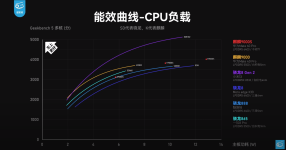
華為麒麟 9000S 詳細剖析,較同類產品落差不小
之前網路爆料 fin 對華為麒麟 9000S 釋疑不少,今日又對外界幾大問題:CPU 配置、製程、政治協商結果額外授權等詳細說明。也有其他爆料者測試麒麟 9000S 得出最新耗能結果。 fin 在 X 指出,華為麒麟 9000S 的 CPU 大核小核如何分配,是否自研,是中芯製造還是存貨等問題,詳細...
Key points:
1. The process should be SMIC N+2 (claim as close to tsmc N7)
2. CPU performance is close to Snapdragon 865/870 (by tsmc N7)
3. Performance/power is relatively poor: Similar performance to Exynos 2100 (by Samsung 5LPE) but consumed 50% more power
4. Very large heat spreader (almost cover entire phone area, probably the largest in the history) also indicates the poor performance/power ratio



